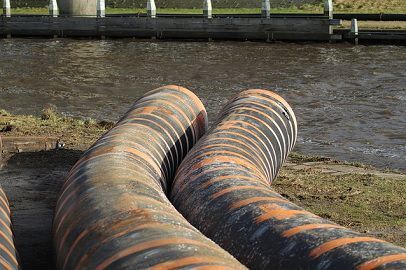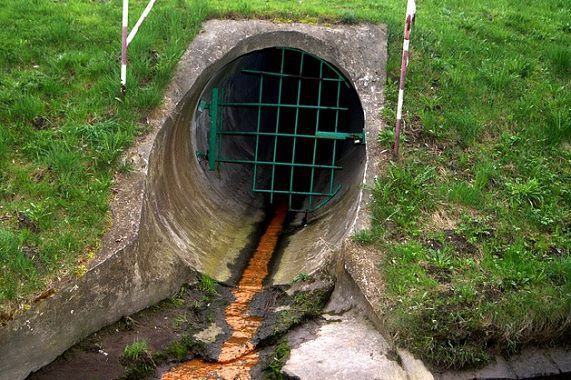Biochemical Oxygen Demand (BOD) is the measurement of the amount of oxygen consumed by aquatic microorganisms to decompose or to oxidize the organic matter. On the other hand, Chemical Oxygen Demand (COD) refers to the amount of oxygen needed to break down the pollutants chemically. BOD and COD are correlated, as both are the methods with the aim of indicating the amount of pollution present in a given water sample.
However, BOD is widely used due to some practical reasons, but the analysis of COD is much faster and accurate than the BOD. These are the two parameters used for measuring the degree of the organic pollution present in sewage or water body. Sewage is a liquid waste or any waste collecting from industrial or domestic sources.
The aquatic animals (fish or other microorganisms) depends on the dissolved oxygen (DO) – the oxygen present in water to living. DO usually depends on the water temperature, the amount of oxygen taken out or used by the other decaying organisms, the quantity of sediment in the water and the amount of oxygen given back by photosynthesising plants, etc. DO is generally measured in milligrams per litre (mg/l) or parts per million (ppm).
Natural organic waste and detritus from various sources like falling septic tank, wastewater treatment plants, agricultural and urban runoff, are the food source for the bacteria or other microorganisms. The bacteria decompose the organic matter using dissolved oxygen (DO) in the aerobic condition and thus declining the level DO for other aquatic animals.
Hence, it is necessary to treat the wastewater, to reduce the BOD level discharged to natural waters, which is done through wastewater treatment plants. Although in this content we will focus on the points on which BOD and COD differ.
Content: Biochemical Oxygen Demand (BOD) Vs Chemical Oxygen Demand (COD)
Comparison Chart
| Basis for Comparison | Biochemical Oxygen Demand (BOD) | Chemical Oxygen Demand (COD) |
|---|---|---|
| Meaning | BOD is the parameter used to measure organic pollution is the surface or sewage water. It is used for measuring the dissolved oxygen utilized by the microorganisms. | COD refers to the oxygen which is equivalent to the organic matter that can be oxidized by using a strong chemical oxidizing agent. |
| Kind of Process | BOD is the biochemical oxidation process. | COD is the chemical oxidation process. |
| Test Process | The test process for BOD is 5210B. | The test process for COD is 410.4. |
| Method for testing | When the sealed water sample is incubated under a specific temperature for the five days and then measuring the water oxygen loss from the starting day of the test. | When the sealed water sample is incubated with the strong oxidant such as potassium dichromate and boiling with sulfuric acid under a specific temperature for the specified duration. |
| Duration of the test | For the process of BOD, the sample is observed for five days. | The process of COD is simple and easy; with the right equipment, it can be performed within two hours also. |
| Permitted limits for test | BOD has limits of 30 mg/l. | COD has limits of 250 to 500 ppm. |
| Values | The value of measurement of BOD is lower as compared to the value of COD. | The value of COD is greater than the value of BOD. |
Definition of Biochemical Oxygen Demand (BOD)
Biochemical Oxygen Demand or BOD is the widely used parameter for measuring the organic pollution in the surface as well as sewage water. It involves the measurement of the amount of dissolved oxygen (DO) consumed by the microorganisms (aerobic organisms) for the biochemical oxidation (break down) of organic matter in the provided water sample at a specific time and temperature.
The method involves the incubation of the sealed water sample for the period of the five days (hence the name given ‘BOD5’) at 20 degrees Celsius. It the organic content in the water sample is found to be high, then the water is diluted for the measurement of the BOD. The loss of oxygen is measured since the beginning of the test; therefore two measurements are observed, one is at the initial stage and second is on the final day.
BOD indicates the amount of organic matter present in the sewage. Ultimately BOD directly affects the dissolved oxygen (DO) of the streams and rivers. So, the more the organic content in the water the higher is the value of BOD. The value of BOD is expressed in milligrams of oxygen per litre of a given sample. The BOD is considered weak in the given water sample when the value is around 100 mg/l; medium when it is 200 mg/l and strong at 400 mg/l. If the dissolved oxygen present in the sample is less than the BOD value, the matter decomposes anaerobically and produces a foul smell.
So we can say that the greater the BOD in the water, the lesser is the availability of the oxygen for the living beings present in that water body. This would greatly affect the life of the living being present in the water, and due to suffocation and stress, they will die. Sources for the BOD are leaves, animal and plant waste, wastewater treatment plants, failing septic system, woody debris, waste from paper and pulp mills, petroleum residues, etc.
Drawbacks of BOD
- A high concentration of bacterial load is needed.
- The duration of incubation is for five days.
- BOD measures biodegradable matters only.
- Despite these drawbacks, BOD is most widely used for other practical and economic reasons.
Definition of Chemical Oxygen Demand (COD)
Chemical Oxygen Demand or COD measures the amount of dissolved oxygen (DO), required for the decomposition or destruction of the organic matter or polluted matter by adding strong chemical oxidising agents. It can be explained in simple words, as the analysis of the oxygen-depletion capacity of the given water sample, contaminated with the organic waste matter.
COD is used in all water quality management programmes as it removes the pollutants present in water by measuring the equivalent amount of oxygen required to oxidize the organic compounds chemically. Usually for this potassium dichromate (K2Cr2O7) is employed for this purpose, but in the presence of a catalyst in acidic medium and with the boiling of sulfuric acid (H2SO4).
COD can be determined in just three hours and has more accurate results than BOD. Importantly, COD is the only method to measure industrial waste, which cannot be performed by the BOD. Even the presence of cellulose in the water is measured through this process only. The COD is considered as weak when the value in the given sample is around 250 mg/l; medium at 500 mg/l and strong at 1000 mg/l.
Key Difference Between Biological Oxygen Demand (BOD) and Chemical Oxygen Demand (COD)
Following are the chief points with regards to differing the BOD to that of COD:
- Biochemical Oxygen Demand or BOD is the parameter used to measure organic pollution is the surface or sewage water. It is used for measuring the dissolved oxygen utilized by the microorganisms for the degradation of the organic detritus. Chemical Oxygen Demand or COD refers to the oxygen which is equivalent to the organic matter that can be oxidized by using the strong chemical oxidizing agent.
- BOD is the biochemical oxidation process, while COD is the chemical oxidation process.
- The name test process for BOD is 5210B and is completed in five days, whereas the name of the test process for COD is 410.4 and it can be completed in two hours.
- Method for testing for BOD is the sealed water sample is incubated under specific temperature for the five days and then measuring the water oxygen loss from the starting day and on the last day. While in COD the sealed water sample is incubated with the strong oxidant such as potassium dichromate and boiling with sulfuric acid under specific temperature for the specified duration.
- Permitted limits for the test in BOD is of 30 mg/l, while in COD it is of 250 to 500 ppm.
- The value of measurement of BOD is lower as compared to the value of COD.
Conclusion
Both the method BOD and COD are used for checking the water pollution in the given water sample; however, COD is easy, saves time and provide faster analysis than the BOD. However due to some practical still BOD is much in use than the COD, apart from these methods, there are two more methods used in wastewater treatments.



Leave a Reply